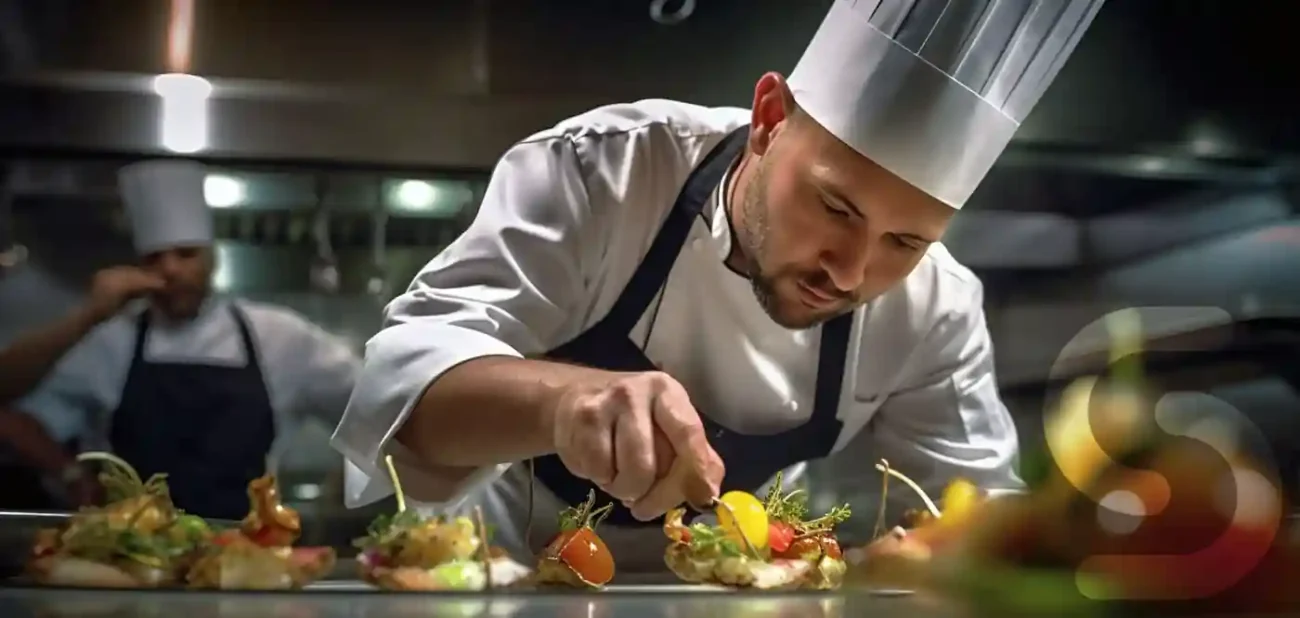Complete Safety Signs Checklist (England & Wales)
Ensuring your venue stays legally compliant. If your catering or hospitality venue is situated in England or Wales, your signage
Ensuring your venue stays legally compliant. If your catering or hospitality venue is situated in England or Wales, your signage
Available in a range of sizes, our brand new illuminated menu covers are all the rage. Our illuminated LED menu
Shop across our entire range of catering & hospitality products with up to 70% off until midnight Monday 1st December.
The leather menu cover can play a crucial role with customer’s first impressions. At Smart Hospitality Supplies, we have made
In culinary hospitality, attire isn’t merely a matter of style; it serves vital functional purposes. The classic chef hat is one iconic piece of clothing that has transcended time in form and function. Anyone who has set foot in a professional kitchen can attest to the presence of this headgear. But what is the true significance of classic chef hats, and why do they continue to maintain their widespread use?

The definitive chef hat, known as the “toque blanche,” is rooted in practicality and tradition. Its history traces back to ancient civilisations where cooks used head coverings to maintain kitchen hygiene. However, the modern toque blanche, as we recognise it today, was significantly influenced by Marie-Antoine Carême, a pioneering French chef of the late 18th and early 19th centuries.
But you can also find variations of this classic, with some modern influences.
Cotton is the most common material for classic hats. It is preferred for its breathability, softness, and moisture absorption. Cotton chef hats are comfortable to wear during long shifts in a hot kitchen and help wick away sweat to keep the chef cool.
Some chef hats are made from a blend of cotton and polyester. This blend combines the moisture-absorbing properties of cotton with the durability and wrinkle resistance of polyester. It helps the hat maintain its shape and appearance even with frequent use and washing. They are super light and comfortable, too.
Traditional chef hats are known for their distinctive features and high-quality pleating. Each pleat represents a specific cooking technique or skill, adding an element of pride and accomplishment for the chef. Beyond symbolism, the pleats allow for improved air circulation, helping chefs stay cool during the demanding hours in a hot kitchen.
Slightly different from traditional toques, paper hats have become a classic in the chef industry since the 19th century, beloved by many.
They may appear simple, but their design is crafted to meet the demands of culinary experts. The key component is the embossed white paper that forms the body of the hat. This material combines lightness and comfort, allowing chefs to concentrate on their culinary tasks without distraction.
Amid a culinary whirlwind, sweating is inevitable. This is where the absorbent sweatband built into these hats comes into play. It effectively wicks away moisture, ensuring the chef remains comfortable throughout their demanding shift. The sweatband, coupled with high-quality pleating, adds a touch of style and offers a secure and comfortable fit.
Every product destined for use in the food industry must adhere to specific guidelines, and chef hats are no exception. It would be best if you found that a hat meets or exceeds the comfortable regulation EU 2016 425. This is crucial to ensure that chefs work comfortably and maintain a positive work environment.
Traditional chef hats are not just iconic pieces of kitchen attire; they hold a significant place in the culinary world for practical and symbolic reasons. These hats, often made from materials such as cotton or paper, have evolved over the years to meet the needs of chefs and kitchen staff and will continue to adapt in future.
If you’re interested in breathability – check out our blog on breathable Chef hats.



A Company Registered in England & Wales Company Registration Number: GB05069286 VAT Registration Number: GB867112521 Smart Hospitality Supplies is a trading division of The Smart Marketing & Media Group Limited
